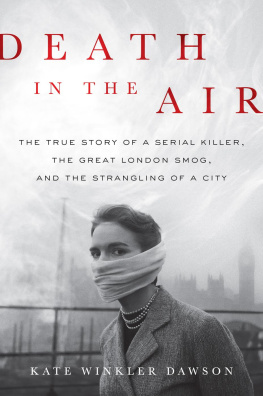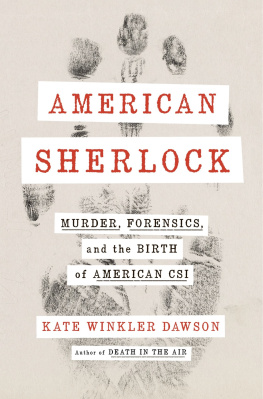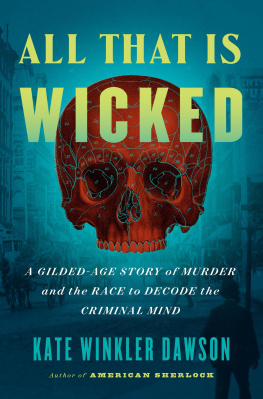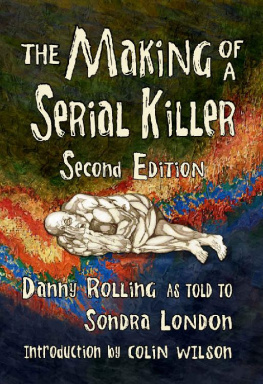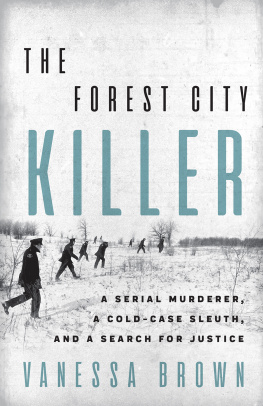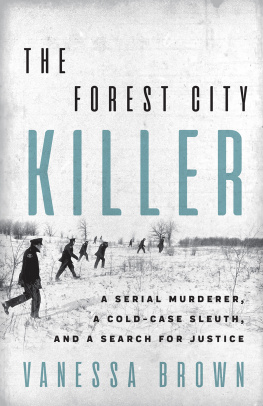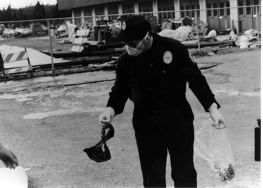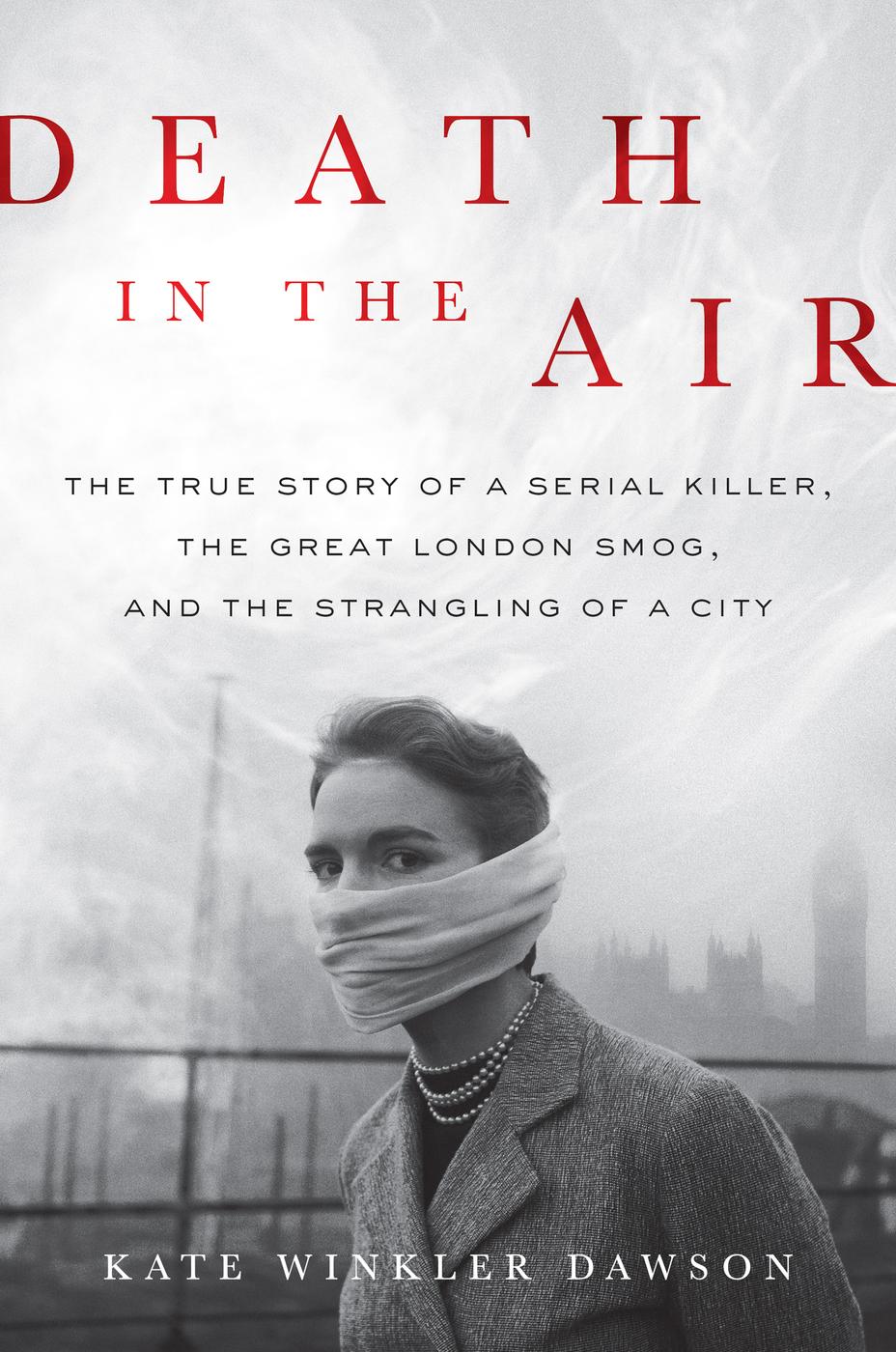
Copyright 2017 by Kate Winkler Dawson
Jacket design by Amanda Kain
Jacket photograph by Carl Sutton/Picture Post/Getty Images
Cover copyright 2017 by Hachette Book Group, Inc.
Hachette Book Group supports the right to free expression and the value of copyright. The purpose of copyright is to encourage writers and artists to produce the creative works that enrich our culture.
The scanning, uploading, and distribution of this book without permission is a theft of the authors intellectual property. If you would like permission to use material from the book (other than for review purposes), please contact permissions@hbgusa.com. Thank you for your support of the authors rights.
Hachette Books
Hachette Book Group
1290 Avenue of the Americas
New York, NY 10104
hachettebooks.com
twitter.com/hachettebooks
First Edition: October 2017
Hachette Books is a division of Hachette Book Group, Inc.
The Hachette Books name and logo are trademarks of Hachette Book Group, Inc.
The publisher is not responsible for websites (or their content) that are not owned by the publisher.
The Hachette Speakers Bureau provides a wide range of authors for speaking events. To find out more, go to www.hachettespeakersbureau.com or call (866) 376-6591.
ISBNs: 978-0-316-50686-1 (hardcover), 978-0-316-50685-4 (ebook)
E3_2017091517_DA_NF
To JWDIll always hold your hand through the fog.
Fog everywhere. Fog up the river, where it flows among green aits and meadows; fog down the river, where it rolls defiled among the tiers of shipping and the waterside pollutions of a great (and dirty) city.
Charles Dickens, Bleak House, 1853
T he teenager carefully avoided broken shards of glass, barely held together by cracked window frames, as the mist dampened her hair. She balanced on bricks and gently braced herself against the frame of the house. It was 1952Londons winter wind, chilly and biting, prompted a shiver that began at her scalp and traveled to her toes. Thirteen-year-old Rosemary Sargent listened for the distant call of her younger brother as the mist thickened into a fog. She hopped across old pieces of wood full of rusty nailsmaterials that once held together a lovely house just a few homes down from her own. Now it was a bombsite, the perfect playground for mischievous kids hoping to avoid boredom. As she looked at the bricks, she could recall what her life had been like during World War II.
During the late summer of 1944, the Nazis had unloaded on Rosemarys working-class neighborhood in southeast Londonshe had been just five. Her family had decided to stay, had refused to be driven outand it was a miracle they survived. Years later, her parents still had their Morrison bomb shelter, a giant metal cage that sat in their parlor. Rosemarys mother had draped a cloth over it and called it a table.
The teenagers dream was to become a schoolteacher, a goal that had sprouted in her familys front garden during the summer the Luftwaffe sent a doodlebug right over her house. Rosemary recalled gripping a piece of chalk, dragging it down her new chalkboard, and then hearing a hum. It was the buzz that triggered such anxiety in Londoners. She could still remember how it looked, like a torpedo with wings. It was really a V-1 flying cruise missile, carrying a warhead that weighed close to two thousand pounds. She hadnt seen one in years, but she could imagine the thing quietly hovering over her house as she stood beneath its tail. She could recall her mother racing from the kitchen to the parlor door and shrieking: Come in, come in, come in!
The boys were making a ruckus nearby. As a light fog drifted in, Rosemary played hide-and-seek in the corpse of her neighbors house.
* * *
The year 1952 suffered a somber beginning in Britain. King George VI had died on February 6 at the age of fifty-six, leaving a war-scarred country in mourning. Albertthat was his given namehad been crowned almost fifteen years earlier, at a time when the public had little faith in the monarchy, after suffering through a royal scandal that rocked the institution to its core . Alberts elder brother, Edward VIII, had ascended the throne first, in 1936, after their father died. Later that year, King Edward abdicated so he could marry an American divorce, Wallis Simpson. Albert had reluctantly become king the following year.
But Albert had risen to the demands of what seemed at first to be an untenable position. When his nation needed a leader, King George VI had become a monarch the British could all stand behind. He had ushered the nation through World War II, through the bombings of London that had scarred the citys landscape as well as its psyche, and through the messy aftermath of war. When his people needed a voice, he spoke for them, despite a debilitating stammer. King George VIs funeral at Windsor Castle was impressive. The country was devastated by his death, but there was reason for optimism. His elder daughter, Elizabeth, ascended the throne as Queen Elizabeth II, ushering in a sense of excitement among the British. At just twenty-five, Elizabeth was the future of the monarchy, and the nations hopes and dreams all seemed to be exemplified by the young, pretty queen, her dashing husband, and her adorable children. Britons looked forward to her lavish coronation, set for the following summer.
But in truth, seven years after the end of World War II, London was still in crisis. Nearly seventy thousand civilians across Britain had been killed during the warforty thousand from air raids alone, and almost half of those had been in London. The British government still faced an enormous war debt. Rationing of sweets and sugar remained in full force. Smoking tobacco was chic, one small luxury amid the fiercely regulated reality of everyday life. And there was another war sapping the countrys resources. More than twelve thousand British troops were fighting alongside American soldiers in Korea. In London, crime was becoming an epidemic in much of the city, as bombed-out buildings gave criminals safe havens. Police were increasingly outnumbered.
And yet there was one industry that was already booming to prewar numbers: coal. For years, coal had fueled the countrys growth, and by 1952 there was at least one coal fireplace per homemeaning that in London, millions of domestic grates were stuffed into an area of just six hundred square miles (just under twice the size of New York City). The fuel was cheap, effective, and crucialit was the only major source of domestic heating in the city at that time. But the smoke could be suffocating, and the sulphur dioxide released into the air was deadly. It triggered acid rain strong enough to bend iron, erode statues, poison land, and contaminate waterwaysthe pollution could destroy lungs and cause cancer. But still the coal burned. In 1952, almost forty coal-fired power stations kept London electrified and more than twenty thousand steam locomotives kept the city moving.
The politics of Big Coal were no less murky than the air it produced. Coal, it turned out, was one of the few thriving international industries remaining in postwar Britainmore than 250 million tons were mined domestically every year; it was a key export for the country at a time when national budgets were tight. More than seven hundred thousand workers were employed in British coal mines. Politicians werent ignorant of the environmental concerns of burning huge quantities of coal every year, but their hands seemed tied.
The Conservative Party, also known as the Tories, was led by Prime Minister Winston Churchill, the countrys ailing but still potent leader. The Conservatives knew that any attempt to constrain the coal industry could be devastating to a vulnerable British economy. Their main opposition, the Labour Party, was anxious to use the countrys massive debt as a weapon in the upcoming election. So the government was keeping up a brisk pace in international coal sales, but it was selling its best domestic coal to other countries and reserving the cheaper coal for its own people. This cheaper coal, a brown dust with bits of coal, was a soft material, a poor replacement for the more expensive black coal still being rationed. It went by the nickname nutty slack, and though it was far inferior to black coal, it was all that most Londoners could afford in those desperate postwar times.

